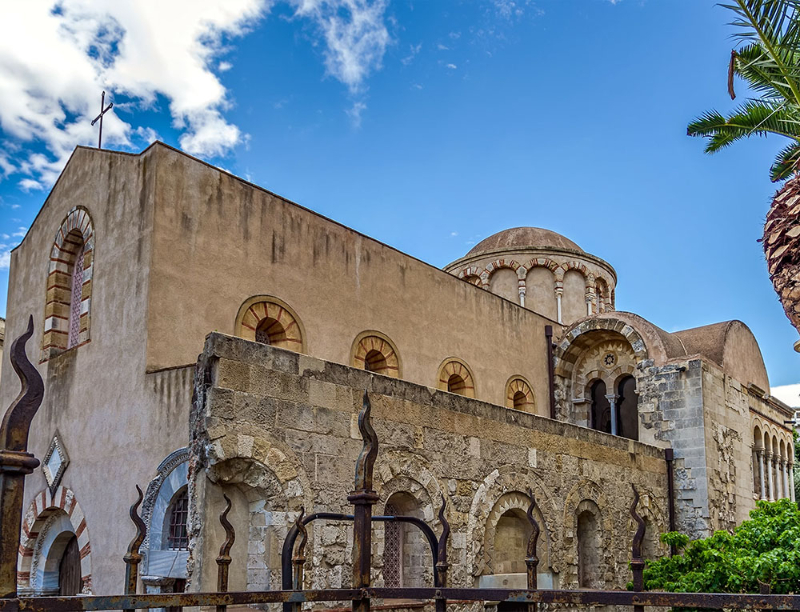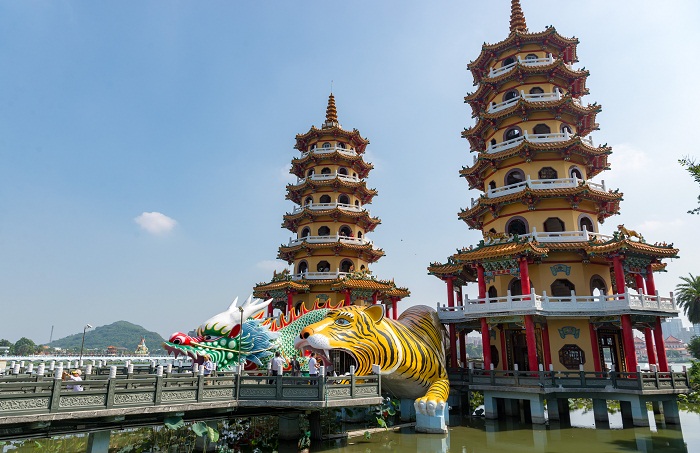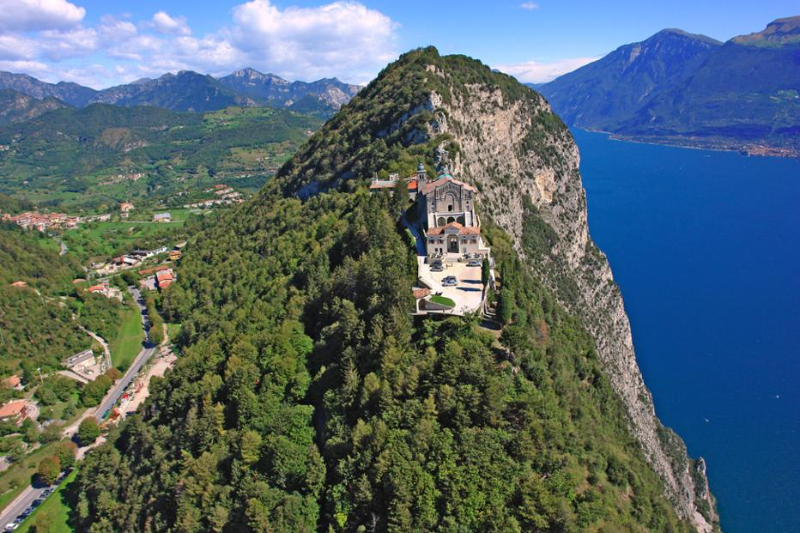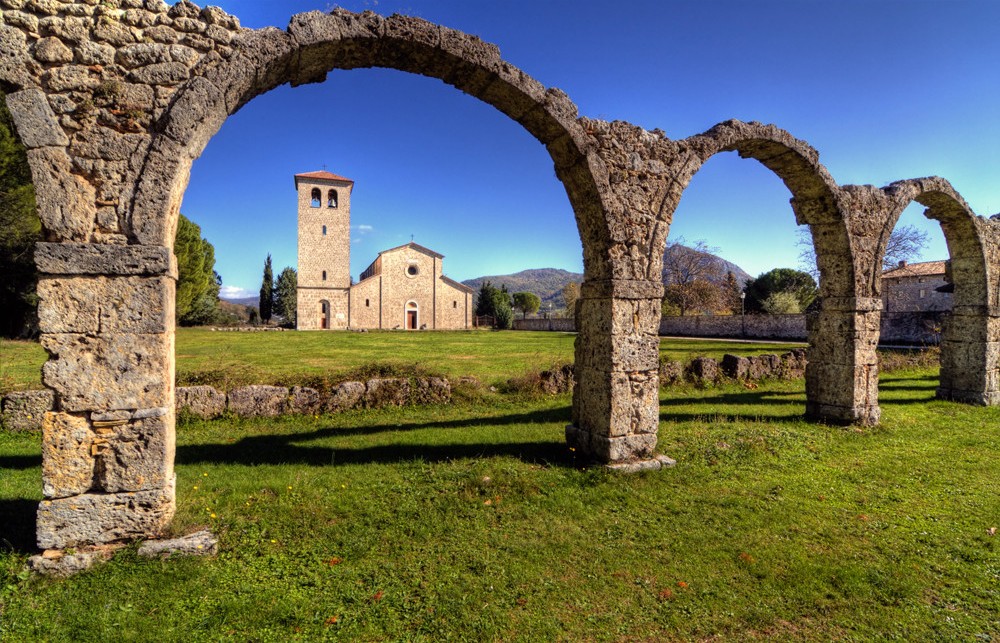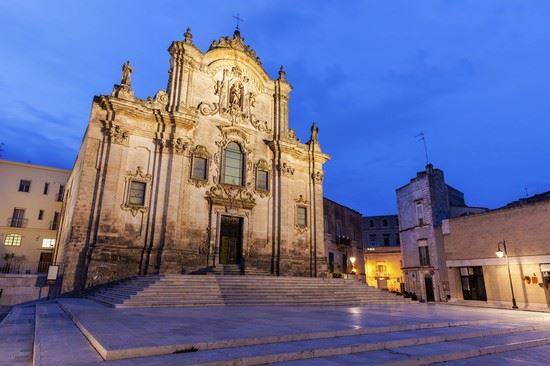The sanctuary of the Madonna del Pozzo, dedicated to the Nativity of Mary and formerly known by the people of Empoli as "della Madonna di Fuori" (outside the Madonna) because it is located outside the circuit of the last circle of walls, overlooks the ancient "campaccio degli Alessandri", now Piazza della Vittoria. The sacred building was built on the site of a fourteenth-century inn owned by the lay company of Sant’Andrea, destined to welcome pilgrims and called "della Cervia". The company used the proceeds of the catering business to maintain a "Spedale" (hospital) located inside the Empoli castle.
In the appurtenances of the inn there was a well surmounted by a tabernacle in which was painted, at the beginning of the fifteenth century, a Madonna and Child between Saints Andrew, Anthony Abbot, Jacopo and John the Baptist. In the first image of the city, the painting representing St. Nicholas of Tolentino protecting Empoli from the plague, kept in the church of Santo Stefano degli Agostiniani, the effigy of the well can be seen. In 1522 a fire destroyed the entire inn, which consisted of six rooms, a hall, a kitchen and a workshop, and only the tabernacle "well" remained standing, the Marian image remaining intact. The image, considered miraculous from this moment on, became the object of extraordinary veneration and the destination of continuous pilgrimages, so much so that the Compagnia di Sant’Andrea had a simple rectangular oratory built around the well, just as we see it depicted in the famous fresco of the siege of Empoli preserved in Palazzo Vecchio in Florence. In 1598 the small oratory, given the growing popularity of the image of the Madonna preserved there, was enlarged. Publicity The seventeenth-century transformations. In 1610, further increasing the veneration of the sacred image, the Compagnia itself, on the recommendation of the nine conservators of the Florentine jurisdiction and dominion, commissioned the Grand Ducal architect Gherardo Mechini to plan another enlargement of the small building. The work, parallel to the enlargement of the choir of the collegiate church of Sant’Andrea, was supervised by the master builder Andrea Bonistalli and consisted in the addition of the octagonal brick tribune, a refined and stylistically perfect construction, adorned with elegant blind arches embellished with finely worked pietra serena capitals. This part of the building represents the worthy crowning of the sanctuary, a tribute to the sacred and venerated image painted in fresco in the tabernacle below. At the same time, in view of the seventeenth-century completion of what was to become an authentic sanctuary, the loggia outside the oratory was also added. The loggia, completed in 1661, resting on light columns in pietra serena, surrounds the pre-existing central body of the church on the three sides left free by the tribune and evokes, albeit distantly in the five arches of the rounded entrance, the most important religious building in the city, the Collegiate Church. Many devotees of the Madonna were buried under this roof, including many ordinary citizens and, in some cases, people of a certain public importance, and we now find it adorned with tombstones and nineteenth-century sepulchral monuments. The bell tower, also in brick, dates back to 1793, and was fortunately spared from the war events of the Second World War. Inside, a simple and sober hall with two side altars, there are only two altars consecrated, respectively, to the Holy Crucifix and St. Anne. A salient characteristic of the interior is the covering of the octagonal tribune elegantly divided with ribs and arches of pietra serena. The sober main altar was built around the miraculous image of the Madonna, a fresco of difficult attribution, attributable to the first half of the fifteenth century and executed by a modest painter who reflects the painting of the masters of the period. The image depicts the Madonna and Child flanked by Saints Anthony Abbot and John the Baptist, while on the two sides are Saints Andrew and James. In 1929 the archbishop of Florence placed two golden crowns on the images of the Madonna and the Child. In 1966 the oratory was raised to sanctuary.


